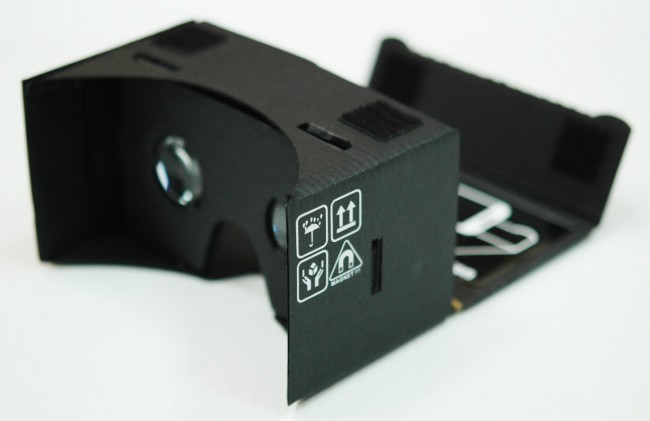
Google’s latest virtual reality (VR) device, Cardboard, went from being a total joke to being the upcoming favorite tech toy in only a year. Google announced Cardboard during the developer conference, I/O, early in 2014. After Facebook spent nearly $2 billion on a VR device, Google poked fun at the company by pointing out they did not need to spend billions on a VR device. And Google Cardboard was born.
Initially, Cardboard was designed to be a device that customers would have to assemble themselves following instructions on how to fold the box. However, Google currently offers a pre-assembled version through four different manufacturers, Dodocase, I Am Cardboard, Knox Labs, and Unofficial Cardboard. The devices cost anywhere from $15 to $35.
Users that choose to assemble their own VR device, Google created a list of additional specs to assist with the assembly of the device. Early next year, Google has planned to release a “user calibration tool” that will allow the user to tailor the device to their specific needs. Google Product Manager, Andrew Nartker, commented that the goal was to determine each user’s focal length and configure the device accordingly. Once it is set up, all the apps will adjust to that specification.
The premise behind Cardboard is to turn any smartphone into a “virtual reality headset.” FIrst, buy the box pre-folded or assemble it from the instructions. Then slip a smartphone in the end, and the VR device is ready to go.
Recently, Google announced that Cardboard had sold over a half million units since its release earlier in the year. There are over a dozen apps that have been developed for the Cardboard to enhance the VR experience. 3D art galleries, games, and tours are included in some apps. There are also apps for concerts and test drives.
Google is also encouraging developers to create more apps. Earlier this week, they released an updated software development kit (SDK). The SDK was released to address issues developers were having creating VR friendly apps. The belief by Google is that it is more fun to develop apps when there are no technical problems to encounter. This is to encourage more developers to create an “awesome, immersive app.”
Once the VR device officially became a serious product, it was pitted against rivaling companies, Samsung and Oculus. Even though Oculus was the first to develop this type of technology, both companies are developing more expensive versions of the VR device. Samsung’s VR device has a higher price tag of $200 or more and reportedly is only compatible with the Galaxy Note 4. Google’s version is compatible with all smartphones.
Even though Cardboard started out as a joke, it is clear it is quickly turning into the favorite tech toy of the season. By keeping the VR device inexpensive and attainable to the masses, Google is offering customers more options for device personalization.
Cardboard is not the end of development for Google, however. They commented that the mobile technology is growing, and that makes it an exciting to be a developer. With platforms like Android, Google expects to be able to expand their offerings and look forward to “enthusiastic developers” taking advantage of the future. They also noted that they are hiring developers to come aboard the company, as they have new projects that are being worked on.
Now a legitimate VR device, Google’s Cardboard went from a joke to a favorite tech toy in less than a year. Google anticipates many more great projects in the upcoming year.
By Kerri Cushna
Sources:
PC Magazine
Business Insider
Geek Infinite




One thought on “Cardboard Went From Joke to Favorite Tech Toy”
$6.45 DIY google cardboard kit: http://www.elecfreaks.com/store/unofficial-version-google-cardboard-p-773.html
Comments are closed.